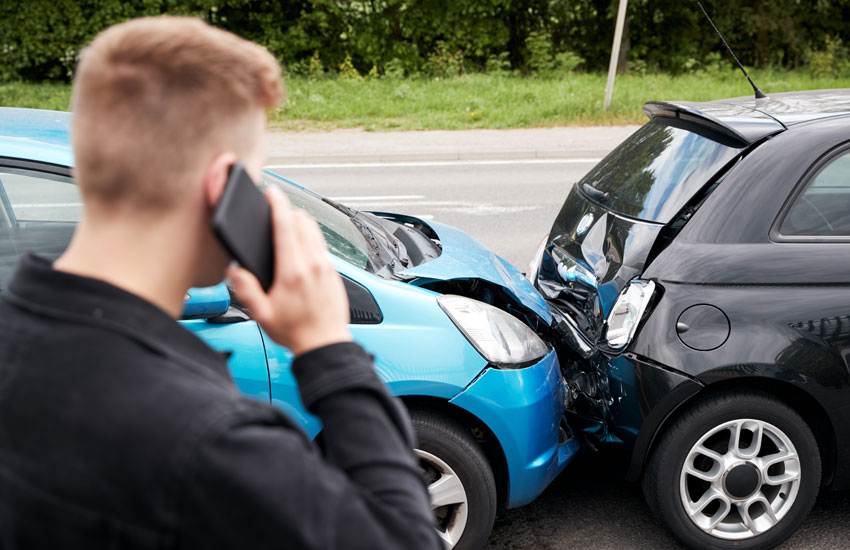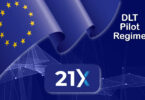Allianz, Europe’s largest insurer, went into production mid-May with a solution to streamline international motor insurance claims. The enterprise blockchain platform has been deployed across 23 European subsidiaries.
In the first six weeks following the launch, hundreds of Allianz staff processed around 145,000 transactions supporting over 10,000 international accident claims.
“We’ve been building quietly for a while,” said Bob Crozier, Allianz Technology’s Head of Enterprise Architecture & Global Head of Blockchain. He noted that many enterprise blockchain teams went quiet after the 2018 hype cycle. “I think that’s when the real work began,” he said.
“We’re just super excited to bring an emerging technology like blockchain and make it real for the business and bring real, tangible business value for Allianz.”
As with most blockchain projects that reach deployment, the solution addresses a tricky business pain point. If a customer is insured by Allianz Hungary and gets involved in a car accident in France, the claim involves both Allianz Hungary and Allianz France, two separate legal entities. What ensues typically is back and forth email communication between the companies about the details of the claim, something that can take weeks and now takes minutes.
Why blockchain?
By using blockchain, there is a single source record of the decision about each claim. That cuts time spent on administration and hence cost, and it means the claim is settled faster for the customer.
Allianz uses three criteria or patterns to assess the appropriateness of blockchain to solve a business problem. Crozier described them as “mirrored processes, which this is. Audit trail, so that you know that single source of the decisions that are made about claims. And of course reconciliation.” An additional reason for selecting blockchain includes opening up the blockchain network to organizations outside Allianz in the future.
Path to production
The claims solution reached production reasonably quickly. The initial Proof of Concept (PoC) was set as a three-month challenge for blockchain Masters students at Fortiss, part of the Technological University of Munich. Just over a year ago, Allianz took their solution on board to convert to an enterprise-grade solution. The ‘two pizza team’ combined staff from London startup Luther Systems and Allianz’s Blockchain Centre of Competence in India. Prior to launch, three of the biggest European Allianz subsidiaries piloted the solution.
Crozier was keen to emphasize the importance of the team, not just on the technology side, but the business, legal, and compliances teams across 23 companies.
Challenges
One of the most difficult tasks with such a large number of participants, even if it’s within the same group, is ensuring that the stakeholders are aligned in the same direction.
Another hurdle we often hear about at Ledger Insights is legal issues, but that wasn’t a significant problem. “We’ve used them as constraints, as innovation challenges to work with them,” said Crozier.
A real challenge was the education needed to bring people “beyond page one of Google about what blockchain is, what the value is and why we have chosen it,” he said.
And having a demonstrable project saving time for hundreds of internal users helps people appreciate the value. That will certainly help going forward.
How it works
When someone submits an auto accident insurace claim, Allianz Hungary would determine it’s a cross border claim and use the international claims portal, which is connected to the country’s node on the Hyperledger Fabric blockchain network. What’s logged on the blockchain is data such as the policy number, claim number, countries involved and other details of the claim. However, it doesn’t contain any personally identifiable information. While the blockchain is used for logging transaction data, alongside it sits a local country relational database where personal information lives.
Apart from the facts of the claim, smart contracts are used to determine how the costs are split between the two organizations, as well as VAT and billing calculations.
The currently deployed version is the minimum viable product, with the aim to flesh it out by the end of the year, including generating bills and integrating with the core insurance platform. Crozier considers what they have so far as the building blocks to extend the solution outside the company to repair shops and manufacturers for connected cars. Now the solution is up and running, initial business outreach has started.
Asked whether Allianz would contemplate opening up the solution to other insurers, given most auto claims are settled between insurers, Crozier said it would be considered but believes it is a bigger challenge. “We all have to be at the same speed to be able to do that,” he said and noted the solution is designed to work with any core insurance platform.
Crozier also sits on the board of insurance consortium B3i, where Allianz is a member and is bullish on how blockchain can address business problems.
“I think we’re really at the beginning now of seeing this technology (enterprise blockchain) come to maturity and bring real value to businesses,” said Crozier. “The drumbeat of live production deployments is getting louder.”






